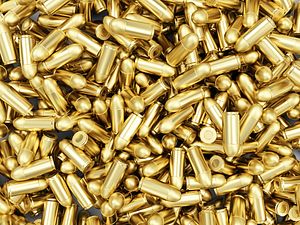Sri Lankan police have recently uncovered ammunition, a suicide vest, and explosives in Chavakachcheri, a town in the country’s north. It’s widely (and realistically) believed that this is an old arms cache. Let’s keep in mind that from 1983-2009 a brutal civil war raged in this South Asian island nation. The Liberation Tigers of Tamil Eelam (LTTE) were fighting for a separate Tamil state in the country’s Northern and Eastern Provinces.
In May 2009, the Sri Lankan government – under the leadership of former president, Mahinda Rajapaksa – militarily crushed the LTTE. However, Sinhala nationalism and the idea (however remote) of the LTTE regrouping within the country can still be used for domestic political gain, especially by Rajapaksa. After all, in the eyes of many Sinhala people, Sri Lanka’s overwhelming ethnic majority, Rajapaksa remains a war hero who defeated a ruthless separatist organization.
Though Rajapaksa unexpectedly lost the country’s January 2015 presidential election, he is currently a member of parliament. Given the wide-ranging corruption allegations against him and his family, he has no incentive to leave public life. In that context, it’s unsurprising that the former president has chosen to weigh in regarding the recent arms discovery. According to Rajapaksa, the weapons that the police found weren’t old, the implication being that the country should be concerned about a return to Tamil militancy in the Tamil-dominated north.
Other members of the country’s “joint opposition” (which Rajapaksa currently leads) have been unhelpful too – claiming that the explosives were meant to be transferred to a Tamil neighborhood in Colombo, the capital.
To be clear, Rajapaksa – who ruled the country from 2005-2015 – was terrible for Tamils. Eventually, he was bad for Muslims too. And, by the time many Sinhala went to vote for him, they cast their ballots in favor of Maithripala Sirisena as well.
Unfortunately, the current administration hasn’t been great for minority communities either and, more generally, is off to a rather unimpressive start. Nonetheless, the insinuation that the discovery of these weapons augurs a return to Tamil militancy is utterly baseless. To complicate matters, Sirisena’s coalition government is comprised of an awkward alliance between the two main political parties that have historically been rivals, the Sri Lanka Freedom Party (SLFP) and the United National Party (UNP). What’s more, the possibility of a Rajapaksa resurgence remains real and the SLFP is still divided.
But let’s not forget that Sri Lanka held presidential and parliamentary elections in 2015. On both occasions, the people voted for change and to turn the page on the corruption, nepotism and authoritarianism that had become Rajapaksa’s trademark.
The best way for the Sirisena administration to weaken the former president’s hand is through a careful explanation its wide-ranging reform agenda, improved governance and connecting rhetoric with reality. When Sirisena ran for the presidency, he garnered support from a diverse coalition and took control of the narrative; he, quite unpredictably, shook up Sri Lanka’s political scene. It’s time for him to rise to the occasion anew.
































